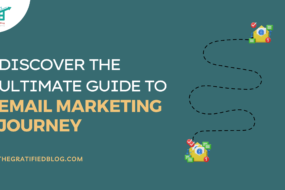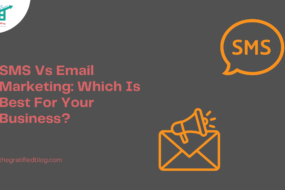
In the rapidly changing and dynamic digital marketing realm, maintaining a competitive edge is not just a benefit or advantage but a necessity. As enterprises endeavor to establish significant connections with their target audience, the efficacy of email marketing remains unparalleled. However, a strategic and systematic approach is paramount To guarantee that your email campaigns go beyond merely reaching inboxes and resonating with recipients. This is where the pivotal concept of an “email marketing audit” comes into play.
This in-depth blog will delve into the complexities of conducting an email marketing audit, its significance, the critical components involved, and how businesses can leverage this process to optimize their email campaigns for maximum impact. Join us as we unravel the nuances of email marketing audits, empowering you to refine and enhance your email marketing strategy to unprecedented levels of success.
What Is An Email Marketing Audit?

An email marketing audit systematically and comprehensively evaluates an organization’s email marketing strategy, processes, and performance. This critical examination aims to assess email campaign effectiveness, identify improvement areas, and ensure alignment with best practices, industry standards, and legal requirements.
Why Conduct An Email Marketing Audit?
Maximizing Campaign Effectiveness:
An email marketing audit is crucial to verify that your email campaigns achieve their goals. They are examining crucial performance. Scrutinizing metrics like open rates, click-through rates, and conversion rates empowers companies to pinpoint areas for improvement.
This process allows marketers to optimize content, design, and targeting strategies to enhance engagement and maximize the overall effectiveness of their email campaigns.
Compliance with Regulations:
Multiple regulations govern email marketing, encompassing the General Data Protection Regulation (GDPR) and the CAN-SPAM Act, officially known as the Controlling the Assault of Non-Solicited Pornography And Marketing Act. Conducting an email marketing audit ensures that your campaigns adhere to these legal requirements.
By reviewing consent mechanisms, privacy practices, and opt-in/opt-out procedures, businesses can mitigate the risk of addressing legal concerns and uphold a favorable standing within subscribers and regulatory authorities.
Maintaining a Healthy Sender Reputation and Deliverability:
The success of an email campaign relies significantly on the deliverability of emails in any email marketing campaign. An audit helps assess the health of your sender’s reputation by analyzing factors such as spam complaints, bounce rates, and engagement metrics.
By promptly identifying and addressing deliverability issues, businesses can optimize their email infrastructure, improve inbox placement, and enhance the chances of reaching and resonating with their target audience.
Components Of An Email Marketing Audit

Subscriber List Analysis:
This component involves a detailed examination of the email subscriber list. It includes assessing the quality of the list by analyzing factors such as the source of subscribers, the frequency of list cleaning, and the presence of inactive or outdated email addresses.
Marketers must segment the list based on relevant criteria, ensuring that emails are targeted and personalized. By identifying and removing unengaged or disinterested subscribers, organizations can improve the overall caliber of their list, leading to improved engagement and deliverability.
Content Evaluation:
Content is a cornerstone of successful email marketing. Marketers scrutinize emails’ design, layout, and overall presentation during the content evaluation phase. They assess the relevance and quality of the content, ensuring it aligns with the preferences and needs of the target audience.
Additionally, personalization strategies are reviewed to enhance the level of customization in emails. Focusing on compelling and engaging content captures subscribers’ attention and contributes to higher open and click-through rates.
Deliverability Assessment:
Each email marketing campaign’s success is contingent upon the critical factor of email deliverability. This component involves analyzing factors that impact the ability of emails to reach the inbox. Marketers examine bounce rates, spam complaints, and sender reputation.
They also check for common spam triggers within the email content. By addressing deliverability issues promptly, businesses can optimize their email infrastructure, establish a positive sender reputation, and increase the likelihood of emails being delivered to the intended recipients’ inboxes.
Compliance and Legal Review:
A thorough review of compliance with legal requirements is essential with the increasing focus on data privacy and regulations. This includes ensuring email marketing practices align with rules, including compliance with regulations like the General Data Protection Regulation (GDPR) and adherence to the CAN-SPAM Act.
Marketers assess the transparency of data collection, the clarity of consent mechanisms, and the effectiveness of opt-in and opt-out processes. By adhering to legal standards, businesses can avoid legal repercussions, build trust with subscribers, and maintain a positive brand image.
Step-By-Step Guide To Conducting An Email Marketing Audit

Pre-Audit Preparation
Before diving into the audit, gathering the necessary data and reports is crucial. This includes accessing analytics and performance metrics from previous email campaigns. Set specific goals for the audit, such as improving open rates, reducing bounce rates, or ensuring compliance.
Establish a clear understanding of the current state of your email marketing efforts, enabling a focused and strategic approach to the audit.
Subscriber List Analysis
Start the audit by thoroughly analyzing your subscriber list. Assess the quality of the list by reviewing sources of subscribers, checking for inactive or outdated email addresses, and evaluating the overall engagement of the audience.
Email marketing tools segment the list according to pertinent factors, like demographics or behavior. Implement list-cleaning strategies to remove unengaged subscribers, ensuring your email communication is targeted and reaches an audience genuinely interested in your content.
Content Evaluation
Examine your emails’ design, layout, and content during this phase. Evaluate the visual appeal, clarity, and relevance of your email content. Check for consistency in branding and messaging.
Assess the effectiveness of personalization strategies, ensuring that your content resonates with the preferences and needs of your audience. This step aims to enhance the overall quality, increase engagement, and enhance campaign performance.
Deliverability Assessment
Analyze factors that impact the deliverability of your emails. Review bounce rates to identify and address issues with invalid email addresses. Examine spam complaints and identify common spam triggers within your content.
Evaluate your sender’s reputation, a critical factor in inbox placement. Address deliverability issues promptly by optimizing your email infrastructure and aligning with best practices. This step is essential for maximizing the chances of your emails reaching the inbox and avoiding potential spam folders.
Compliance And Legal Review
Ensure your email marketing strategies follow relevant regulations and legal standards. Review data collection processes for transparency and compliance with GDPR and CAN-SPAM Act laws. Check the clarity and effectiveness of your opt-in and opt-out procedures.
Confirm that your email communications include necessary legal disclosures, such as a physical business address and an unsubscribe link. This stage is essential to avoid legal complications, build customer trust, and maintain a positive brand reputation.
Following this step-by-step guide, businesses can conduct a comprehensive email marketing audit, addressing key areas to optimize performance, enhance engagement, and ensure legal compliance. Regular audits help organizations stay proactive in adapting their strategies to evolving market dynamics and customer expectations.
Common Pitfalls In Email Marketing Audits
Overlooking the Importance of List Hygiene:
One common pitfall in email marketing audits is paying attention to the significance of maintaining a clean and well-managed subscriber list. Over time, email lists can accumulate inactive or outdated email addresses, leading to higher bounce rates and potentially damaging the sender’s reputation. Failing to prioritize list hygiene can decrease deliverability, lower engagement rates, and negatively impact overall campaign performance.
Ignoring Design and Content Best Practices:
Design and Content play an indispensable role in determining the success of email campaigns. Ignoring best practices in these areas can lead to visually unappealing emails that are difficult to read or irrelevant. Failing to optimize design for various devices or neglecting the importance of compelling content can result in lower open and click-through rates. In an audit, overlooking design and content best practices can undermine the effectiveness of email campaigns.
Neglecting Compliance and Legal Considerations:
Compliance with data protection laws and email marketing regulations is non-negotiable. Refraining from ensuring email marketing practices align with legal standards, such as GDPR and the CAN-SPAM Act, can have severe consequences. Lack of transparency in data collection, adequate opt-in/opt-out processes, or missing legal disclosures can lead to legal issues, damage the organization’s reputation, and result in financial penalties.
Not Addressing Deliverability Issues Promptly:
Ensuring deliverability is a pivotal element in the realm of email marketing success. Please address deliverability issues promptly to avoid emails being marked as spam, bouncing, or not reaching the intended audience. Topics such as high bounce rates, spam complaints, or a poor sender reputation need immediate attention. Neglecting to resolve these problems can have a cascading effect on future campaigns, hindering the ability to connect with subscribers and achieve marketing goals.
Conclusion
Now that you know everything about email marketing audit, then why loose your leads. Start your audit today and see what has been working for you and what hasn’t. Also remember what are components of an email marketing audit.
If you still have any questions related to the blog, then please leave your questions in the comment section. We will be happy to answer you.
Thanks for reading 🙂








No Comments